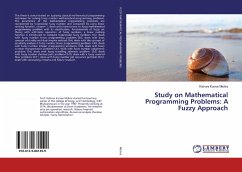
Management of Perishable Inventory: A Mathematical Modelling Approach
Study of Optimal Ordering Policies for Time Varying Decay Rate of Inventory Under Different Payment Conditions
Versandkostenfrei!
Versandfertig in 6-10 Tagen
39,99 €
inkl. MwSt.

PAYBACK Punkte
20 °P sammeln!
During the last two decades, researchers are engaged in analyzing inventory models for deteriorating items such as volatile liquids, blood, medicines, fashion goods, fruits and vegetables etc. This book presents mathematically derived models to facilitate decision making and control of the inventory system of perishable items. Several economic and business factors are assumed and introduced in different models to capture real life situations and the optimal ordering policies are derived and examined therein. Analytical proofs are derived and hypothetical examples are used to show and support t...
During the last two decades, researchers are engaged in analyzing inventory models for deteriorating items such as volatile liquids, blood, medicines, fashion goods, fruits and vegetables etc. This book presents mathematically derived models to facilitate decision making and control of the inventory system of perishable items. Several economic and business factors are assumed and introduced in different models to capture real life situations and the optimal ordering policies are derived and examined therein. Analytical proofs are derived and hypothetical examples are used to show and support the solution procedures. Managerial insights are embedded in the observations and conclusion sections of each model. This book will be useful to researchers and practitioners of inventory modeling area to examine the effect of several factors like supplier credits / permissible delay in payments, price dependent demand, inflation, stock out costs, stock dependent demand etc on the ordering policies. Most importantly this book would surely serve as an initial guide for researchers with inventory control and mathematics interface.












